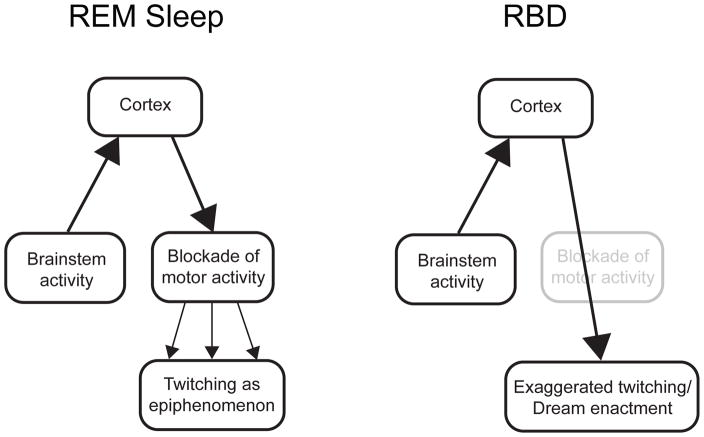Figure 2.
Conventional hierarchical models of the relationship between cortically generated dreams and behavior in normal REM sleep (left) and RBD (right). In normal REM sleep, cortical motor outflow is incompletely suppressed in the medulla, resulting in the production of twitches as by-products. In RBD, the medullary blockade is diminished or lost, allowing dream-related motor activity to be expressed with greater fidelity. In the extreme, dreams are ‘enacted.’

